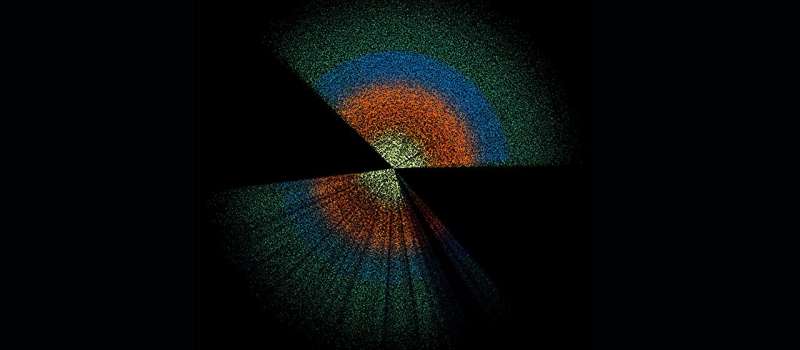A recent study led by the University of Geneva (UNIGE) has provided new insights into the behavior of dark matter, suggesting it adheres to the same gravitational laws as ordinary matter. Published in Nature Communications on November 3, 2025, the research indicates that dark matter, which constitutes approximately five times more than ordinary matter, falls into gravitational wells created by massive celestial bodies in a manner akin to visible matter.
This research addresses a fundamental question in cosmology: Does dark matter follow the same physical laws as the matter we can observe, or is it influenced by an additional, unknown force? The study was spearheaded by Camille Bonvin, an associate professor in the Department of Theoretical Physics at UNIGE. The team aimed to compare the velocities of galaxies—primarily composed of dark matter—with the depths of gravitational wells, which are distortions in space-time created by the mass of celestial objects.
According to Bonvin, “If dark matter is not subject to a fifth force, then galaxies—which are mostly made of dark matter—will fall into these wells like ordinary matter, governed solely by gravity.” Conversely, if a fifth force exists, it would alter the motion of galaxies, resulting in a different pattern of movement.
The researchers utilized current cosmological data to analyze the motion of galaxies. Their findings suggest that dark matter behaves in a manner consistent with ordinary matter, obeying the principles outlined in Einstein’s theory of general relativity and Euler’s equations.
While these conclusions indicate that dark matter does not appear to be influenced by an additional force, Nastassia Grimm, the first author of the study, notes that the possibility of a fifth force has not been entirely dismissed. “If such a fifth force exists, it cannot exceed 7% of the strength of gravity—otherwise it would already have appeared in our analyses,” Grimm explained. She is a former postdoctoral researcher at UNIGE and has recently joined the Institute of Cosmology and Gravitation at the University of Portsmouth.
The study represents a significant advancement in understanding dark matter and its properties. The next stage of research will focus on determining whether dark matter is indeed governed by a fifth force. Isaac Tutusaus, a researcher at ICE-CSIC and IEEC, and co-author of the study, emphasized the potential of upcoming experiments, stating, “Data from the newest experiments, such as LSST and DESI, will be sensitive to forces as weak as 2% of gravity. They should therefore allow us to learn even more about the behavior of dark matter.”
This research not only enhances our comprehension of dark matter but also opens the door to further investigations into the fundamental forces of the universe. As scientists continue to explore these enigmatic components of our cosmos, they aim to unravel the mysteries that still surround dark matter and its role in the universe’s structure and evolution.
For more information, refer to the original study by Nastassia Grimm et al., titled “Comparing the motion of dark matter and standard model particles on cosmological scales,” published in Nature Communications (2025).







